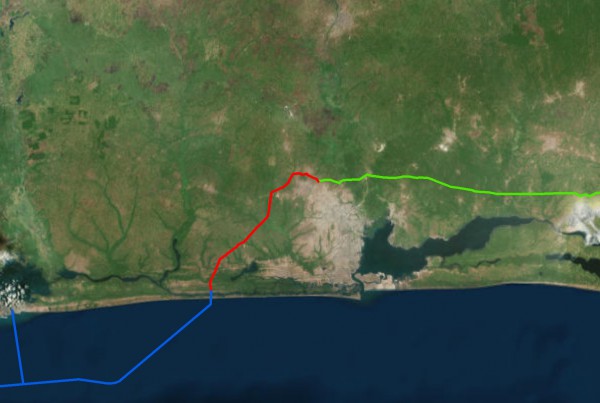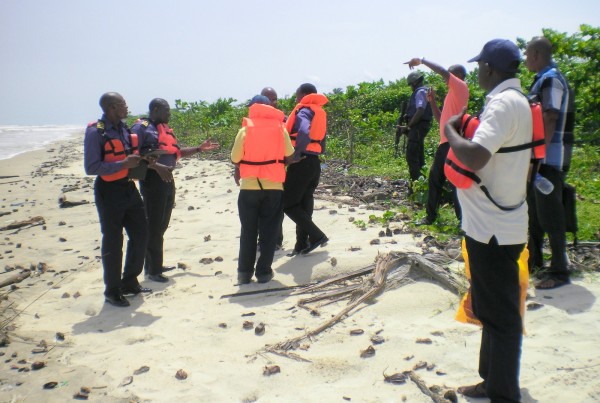
Data Services
Reliable hydraulic design conditions are crucial in every offshore, port and coastal development project. This begins with the acquisition, interpretation and validation of accurate offshore data, knowledge of the local climatology and the technology used to produce the data. Where available, all data are validated with measurement data from alternative sources such as buoys or satellites.
CDR maintains databases of global long-term wind and wave records as well as historical cyclone tracks which allows us to produce MetOcean reports for use for a first site selection and as critical input for numerical modelling studies. Available on-line data can furthermore be used to produce reliable wave fore-casts to optimize downtime during construction, increase accessibility of ports or determine the best time-slot for unloading in harsh conditions.
Operational, extreme as well as short term and forecasted wind and wave statistics can be provided for offshore locations which can be translated to nearshore by wave studies. In addition, we can develop site and project-specific marine forecast services.
CDR provides detailed and high quality meteorological and oceanic data (both archived data as well as forecast data) for use in offshore and coastal projects.
Wave Studies
Wave modelling studies are performed for the following purposes:
- Transform the offshore wave climate to their corresponding nearshore wave climates
- Perform wave disturbance and resonance studies in ports and harbours
- Provide input for sediment transport studies
- Derive wave loadings for marine structures, piles, pipelines etc.
Wave studies are performed from global scale to smaller, local scales; applying a wide range of state-of-the-art wave models. We operate both third generation spectral models (MIKE21-SW and SWAN) as well as time domain models (Boussinesq and non-hydrostatic, MIKE21-BW and SWASH).
Wave Disturbance
Wave conditions within ports and harbours often require the application of phase resolving models to properly take into account processes such as wave transmission, reflection and diffraction which are typically dominant in those areas. In certain circumstances, also long wave (infra-gravity wave) action and the port’s response to long waves is investigated as moored vessels are responsive to long wave frequencies. We have wide experience in studying wave phenomena typically dominant in port areas, making use of MIKE21-BW and SWASH. We perform detailed wave amplification analysis and wave resonance studies, as well as wave penetration of primary (sea and swell) waves.
Meteorological and Oceanographic (MetOcean) Studies
For the development and design of offshore and coastal structures, it is important to understand the mechanics of the sometimes harsh and challenging surroundings this new structure will be placed in. CDR maintains databases of global long-term wind and wave records as well as historical cyclone tracks which allows us to produce Metocean reports for use for a first site selection and as critical input for numerical modelling studies.
Operational, extreme as well as short term wind and wave statistics can be provided for offshore locations and later translated to nearshore by wave studies. In addition, we can develop site and project-specific marine forecast services.
Numerical Modeling Studies
Numerical modelling studies of waves and currents often form the basis for coastal, harbour and river engineering. Such models are applied to obtain or increase knowledge on the occurring water dynamics and hydraulic and morphological processes and to obtain design conditions for further engineering.
CDR has extensive hydrodynamic modelling experience and uses state-of-the-art modelling software including the MIKE21 suite, SWAN and Deltares software (D-flow, Delft3D, SOBEK) in a strategic partnership with Svašek Hydraulics (www.svasek.com) and MetOcean Consult (www.metoceanconsult.com).
Due to the experience obtained in numerous projects we can offer simple and straight-forward studies for preliminary designs up to extensive, in-depth numerical modelling of morphology, wave penetration into port basins and wave disturbance studies for final design of Port Projects.
Approach
Reliable hydraulic design conditions are crucial in every offshore, port and coastal development project. This begins with the acquisition, interpretation and validation of reliable offshore data, knowledge of the local climatology and the technology used to produce the data. Preferably such data is calibrated and verified by measurements, such services can be provided as well.
CDR provides detailed and high quality meteorological and oceanic data (both archived data as well as forecast data) for use in offshore and coastal projects. This can be gathered and used for preliminary design studies and later further enhanced and calibrated using measurements for final design studies, even further increasing the accuracy and reliability of the data and hence structural design.
Hydrodynamic modelling studies can be used to determine reliable hydraulic design conditions (waves, currents), assess morphological impacts, determine wave penetration into a port and to optimize coastal, land reclamation, dredging and riverine projects using a practical, straight forward and reliable approach.
Wave modelling studies are used to determined design wave conditions, either for conceptual, preliminary or final design, and to compute wave penetration into Ports or sheltered areas. Breakwater layouts and consequent wave penetration into Port areas is one of the most important design items for Ports as too high wave disturbance causes increased downtime. The (combined) effect of wind waves, swell waves and long waves (infra-gravity waves) from different directions should be properly taken into account to determine the wave disturbance and hence expected downtime at the berths. As the breakwater structures often form the main capital costs of a Port, optimization of the layout (breakwater length) may therefore be decisive for the feasibility of a project or winning the project as contractor. CDR in cooperation with partners have developed a quick, practical method to optimize (Port) Breakwater layouts using wave penetration modelling in an iterative process, enabling to optimize a Port design together with the Client in a single workshop session.
Wave studies are performed from global scale to smaller, local scales, applying a wide range of state-of-the-art wave models. We operate both third generation spectral models (MIKE21-SW and SWAN), mild-slope equation models (HARES, PHAROS) as well as time domain models (Boussinesq and non-hydrostatic, MIKE21-BW and SWASH).
Services
CDR provides the following hydraulic and numerical modelling studies:
- MetOcean studies: high accuracy offshore wave- and wind data, including wave forecasting;
- Wave studies: nearshore wave statistics, reliable design wave conditions, wave penetration studies and wave disturbance studies (very long waves). Practical methods are available to optimize Port layouts using quick iterative wave penetration studies, being able to optimize the layout in a single workshop with the Client. In particular these and following wave studies can be performed:
- Transformation of an offshore wave climate to nearshore wave climates at required locations
- Wave penetration, wave disturbance and wave resonance studies in ports and harbours. Both practical and quick-scan studies as comprehensive (final design) studies including the whole range of wave conditions (wave heights, periods, directions, combination of conditions)
- Providing input for sediment transport studies
- Derive wave loadings for marine structures, piles, pipelines etc.
- Hydrodynamic modelling studies: (extreme) water levels, flow conditions and run-off in coastal areas, river system and urban areas.
- Morphological studies: coastal erosion studies, morphological impact studies, optimization of sand nourishment of land reclamations under changing year-round wave conditions.
Together with our partners we also provide site survey campaigns, viz. hydrographic, topographic and geotechnical survey campaigns to support the numerical modelling studies and provide for important local hydrodynamic and geotechnical data.






















